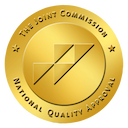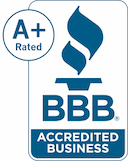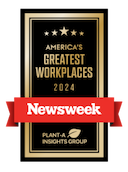Alcohol & Drug Rehab Near Palm Beach, Florida
Are you looking for addiction treatment near Palm Beach, Florida? Recovery First Treatment Center, based in Southern Florida, is here to support you. Our top-tier rehab center offers comprehensive, evidence-based addiction care, providing the compassion and guidance you or your loved one need on the path to recovery.
Continue reading to learn more about the treatment options and amenities we provide, the admissions process, and how to manage payment for treatment.

Drug & Alcohol Rehab Near Near Palm Beach, Florida
When you or a loved one is facing substance use challenges, it can be overwhelming and difficult to know where to start. The good news is that there are effective treatment options available to help you take that crucial first step toward recovery and healing through addiction treatment in South Florida.
Recovery First offers a variety of benefits when choosing a rehab near Palm Beach, including personalized, expert treatment for substance use disorders, a compassionate and highly qualified team, an excellent staff-to-patient ratio ensuring individualized care, as well as top-notch amenities and specialized programs.Addiction Treatment at Our Rehab in South Florida
If you’re asking, “What is addiction treatment?” or “What happens at rehab?”, our admissions team at Recovery First is here to provide the information you need. They can also help guide you to the right alcohol and drug rehab near Palm Beach.
Recovery First offers a variety of evidence-based addiction programs and amenities to support those on their recovery journey. For residents of Palm Beach, our facility provides a convenient and compassionate environment, offering various types of addiction treatment, including:
- Often the first step in the recovery process for those who are drug- or alcohol-dependent.
- Length of detox is typically 5–7 days.
- Patients are supported around the clock by trained medical staff.
Inpatient addiction treatment (residential treatment)
- Patients stay at the facility in apartment-style accommodations and receive treatment on a structured daily schedule.
- Optimal for patients with co-occurring mental health disorders or severe addictions.
- Medical and clinical staff are available to assist patients 24/7.
Outpatient addiction treatment
- Options range from a more intensive partial hospitalization program (PHP) to a less time-consuming intensive outpatient program (IOP).
- Patients attend therapy and group support sessions on a set schedule.
- Patients are not required to live at the facility.
- We also offer addiction treatment services via telehealth.
- Helps patients sustain long-term recovery and avoid relapse through continued support.
As part of our levels of care, proven addiction treatment therapy is incorporated into treatment. Types of therapy include:
- Group therapy.
- Individual therapy.
- Cognitive Behavioral Therapy (CBT).
- Dialectical Behavior Therapy (DBT).
- Trauma-based Therapy.
To learn more about our programs and treatment admissions process, call us at today.
Amenities and Offerings at Recovery First
At Recovery First, we understand that a patient’s comfort is essential to the success of their treatment. To enhance the recovery experience, we offer a range of accommodations and amenities, including:
- Indoor and outdoor recreational spaces.
- On-site gym and fitness center.
- Mindfulness and relaxation areas.
- Nutritious, thoughtfully prepared meals.

Why Choose Recovery First Treatment Center
Specialized programs are just as crucial to the recovery process as traditional treatment options. At Recovery First, we offer a range of customized programs designed to provide extra support and enrich the recovery journey for our patients.
When choosing a rehab center in Florida, it’s important to consider specialized treatment programs. These programs are tailored to meet the unique needs of individuals based on their personal circumstances and backgrounds.
At Recovery First, our inpatient rehab in Hollywood, FL, we offer exceptional specialty programs that ensure a more personalized and effective recovery experience. Some of these specialized programs include:
How to Get to Recovery First Treatment Center From Palm Beach

How to Pay for Addiction Treatment Near Palm Beach, Florida
When considering how to pay for rehab near Palm Beach, you can explore various options, including health insurance, self-payment, and financing plans.
Don’t let the cost of treatment prevent you from starting your recovery. Our team is here to guide you through the process of paying for addiction treatment , helping you begin your healing journey with less stress and greater peace of mind.
Does Insurance Cover the Cost of Drug Rehab Near Palm Beach?
Yes, health insurance can help cover a portion of the cost of rehab. While most insurance plans offer partial coverage for substance use treatment, the specifics depend on your individual policy.
If you’re a Veteran with VA coverage, Recovery First is an approved community care provider, and you may be eligible to use your VA benefits for treatment.
At Recovery First Treatment Center, we aim to make the insurance process as easy and transparent as possible, guiding you through the steps for using insurance to pay for rehab. Conveniently located near Palm Beach, our facility works with several major insurance providers, including:
To verify your insurance coverage for rehab in South Florida, simply complete our now.
Get Admitted to Addiction Treatment Near Palm Beach
Have you been searching for an alcohol rehab near Palm Beach without success? Located in Hollywood, FL, Recovery First Treatment Center provides comprehensive medical detox and residential treatment services, offering the essential support you need to begin your journey to sobriety.
Our admissions team is available 24/7 at , ready to answer any questions and guide you through every step of the process as you begin your recovery.
Now is the ideal time to take the first step toward lasting recovery. If you’re looking for a drug rehab near Palm Beach, Recovery First Treatment Center offers expert care just a short drive away. Contact us today to learn more about our treatment admissions process and start building a healthier, sober future.


